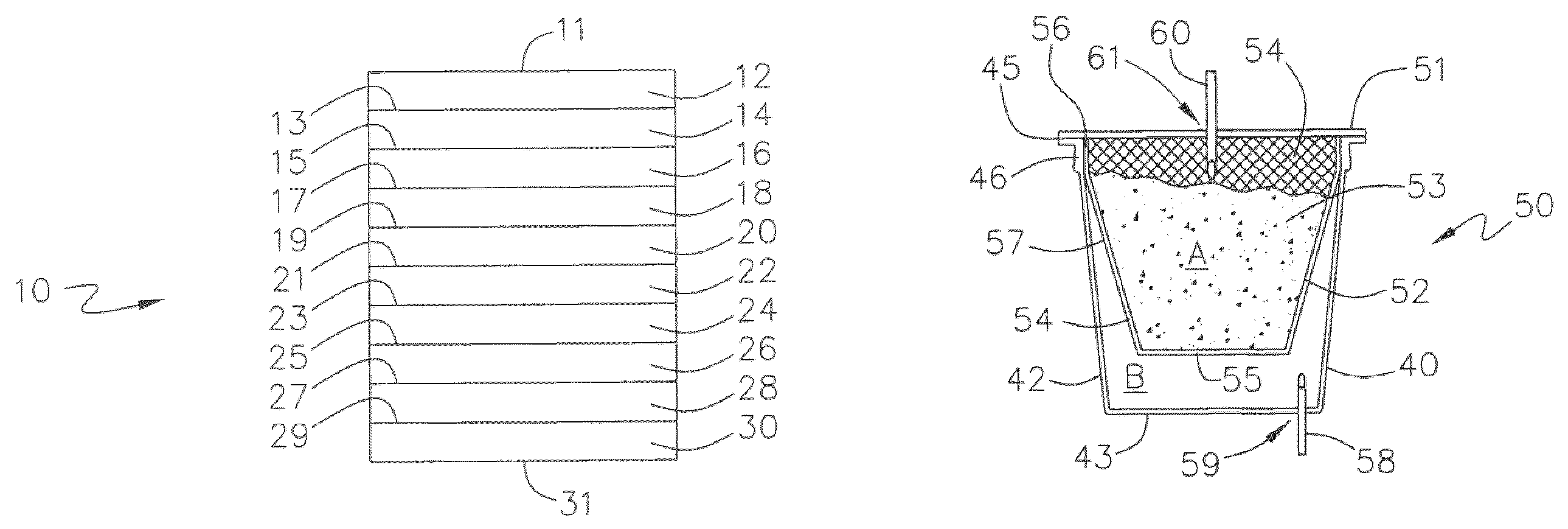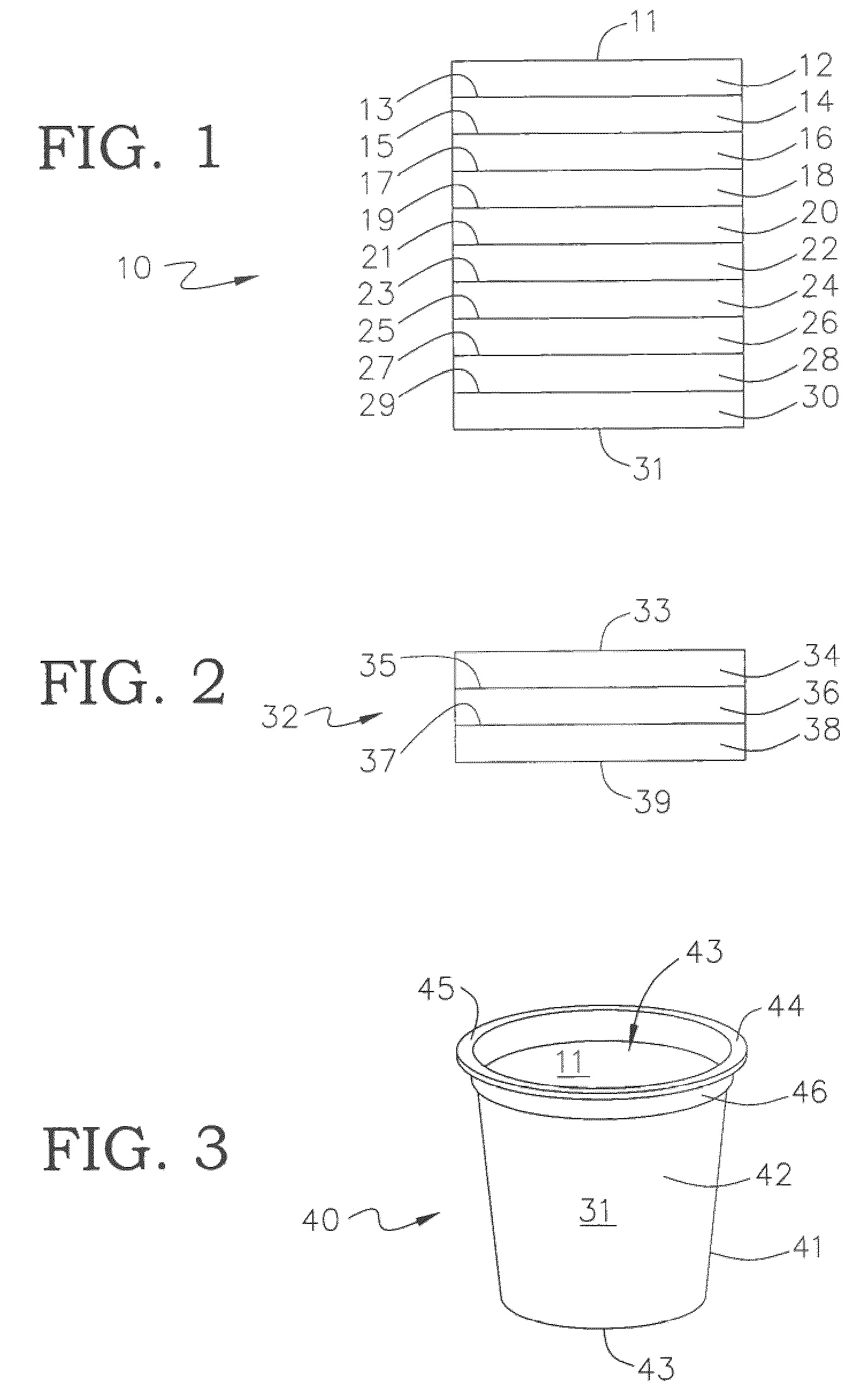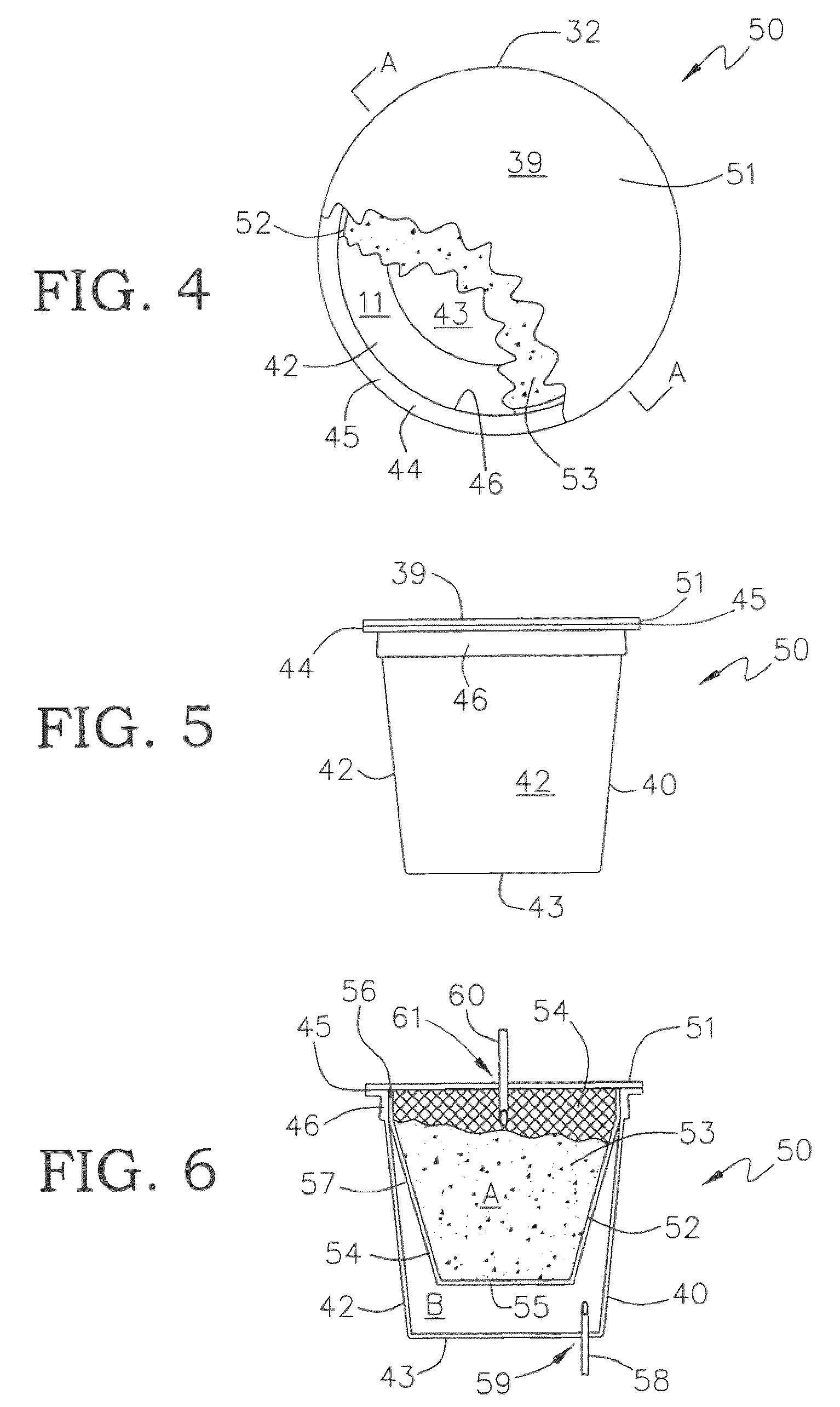Mineral composite beverage brewing cup and cartridge
a technology of mineral composite and beverage brewing, which is applied in the direction of packaging, packaging foodstuffs, packaged goods, etc., can solve the problems of reducing the rigidity and strength of the base, sidewalls buckling inward during the piercing process, and similar buckling may occur
- Summary
- Abstract
- Description
- Claims
- Application Information
AI Technical Summary
Benefits of technology
Problems solved by technology
Method used
Image
Examples
examples
[0097]Experimental results and reported properties of the following examples and comparative examples are based on the following test methods or substantially similar methods, unless otherwise noted:
[0098]Density: ASTM D-792
[0099]Tensile Strength: ASTM D-882, Method A
[0100]Oxygen Gas Transmission Rate (O2GTR): ASTM D-3985-81
[0101]Water Vapor Transmission Rate (WVTR): ASTM F 1249-90
[0102]Melt Index: ASTM D-1238, Condition E (190° C. / 2.16 kg) unless indicated otherwise herein e.g. propene-based (>50% C3 content) polymers tested at Condition TL (230° C.); polystyrene polymers were tested at 200° C.; 5 kg)
[0103]Melting point: ASTM D-3418, DSC with 5° C. / min heating rate
[0104]Vicat Softening Temperature: ASTM D-1525
[0105]Following are comparative examples and examples given to illustrate embodiments of the invention. All percentages are by weight unless indicated otherwise. All averages are mean unless indicated otherwise.
examples 1-10
[0106]Example 1 is a comparative example (not of the invention) and examples 2-10 are of the invention with examples 8-10 being illustrative hypotheticals. The following comparative example 1 is a prior art rigid single serve, disposable cup suitable for processing beverages therein such as those used in making a filter cartridge for brewing coffee in a Keurig-style coffee brewer. Examples 2-10 are of the invention and illustrate improvements afforded by preferred embodiments of the invention relative to this comparative example. The cups are made by thermally laminating together a seven layer blown film after slitting the tube to make a sheet with a three layer cast sheet by means known in the art to produce a ten layer sheet suitable for thermoforming by known techniques and equipment into a flanged cup.
[0107]The seven layer film may be made using conventional blown film equipment and procedures known in the art to produce the structure related below. The layers are all coextruded...
PUM
 Login to View More
Login to View More Abstract
Description
Claims
Application Information
 Login to View More
Login to View More - R&D
- Intellectual Property
- Life Sciences
- Materials
- Tech Scout
- Unparalleled Data Quality
- Higher Quality Content
- 60% Fewer Hallucinations
Browse by: Latest US Patents, China's latest patents, Technical Efficacy Thesaurus, Application Domain, Technology Topic, Popular Technical Reports.
© 2025 PatSnap. All rights reserved.Legal|Privacy policy|Modern Slavery Act Transparency Statement|Sitemap|About US| Contact US: help@patsnap.com



